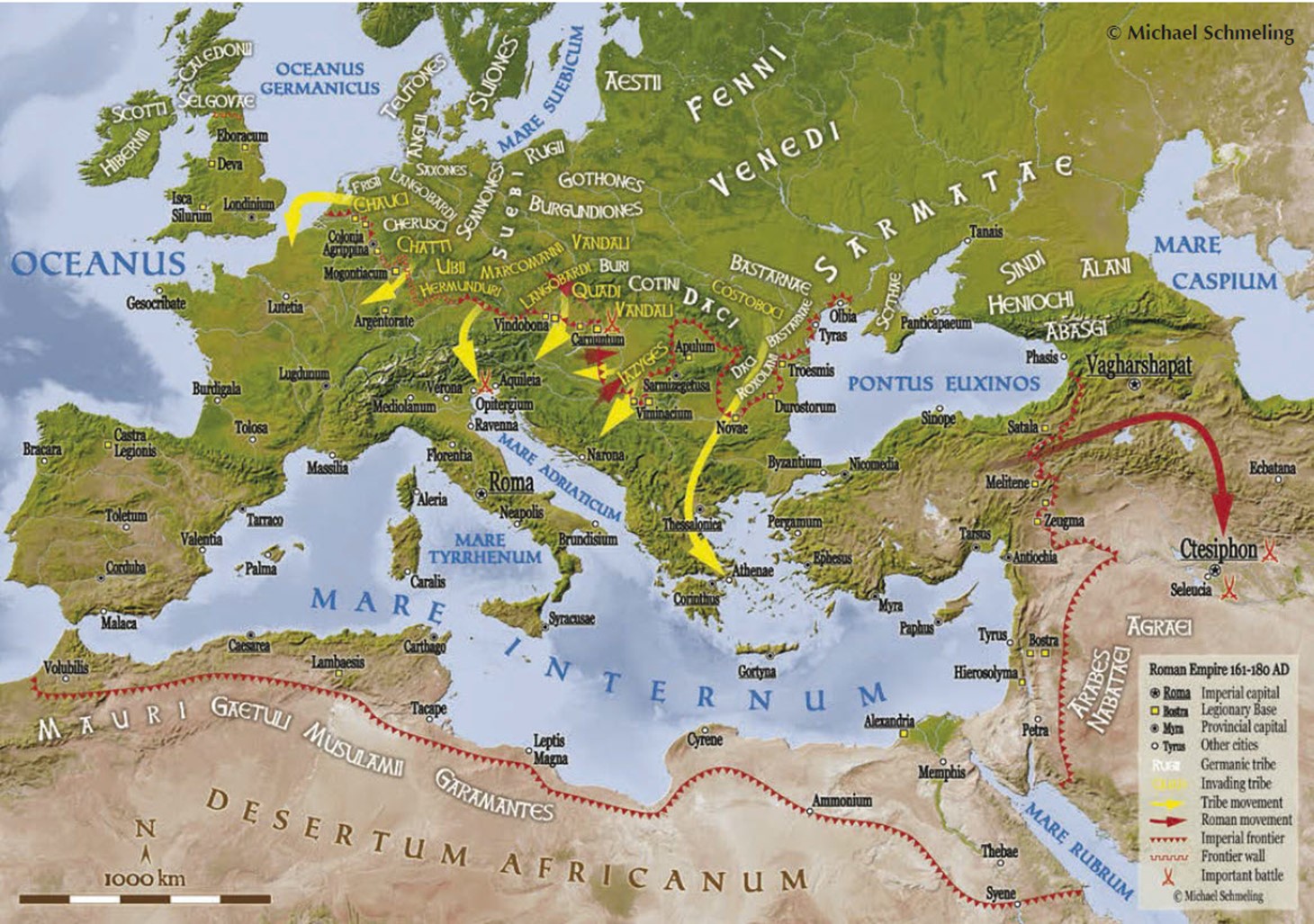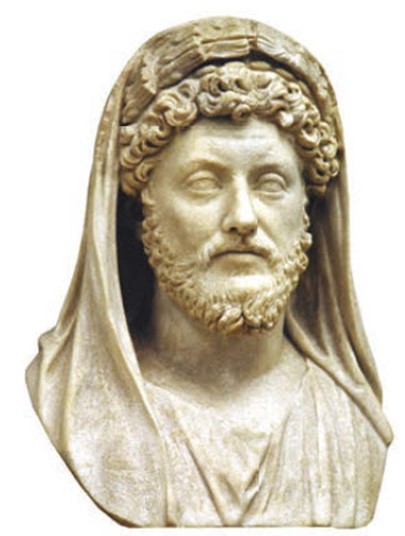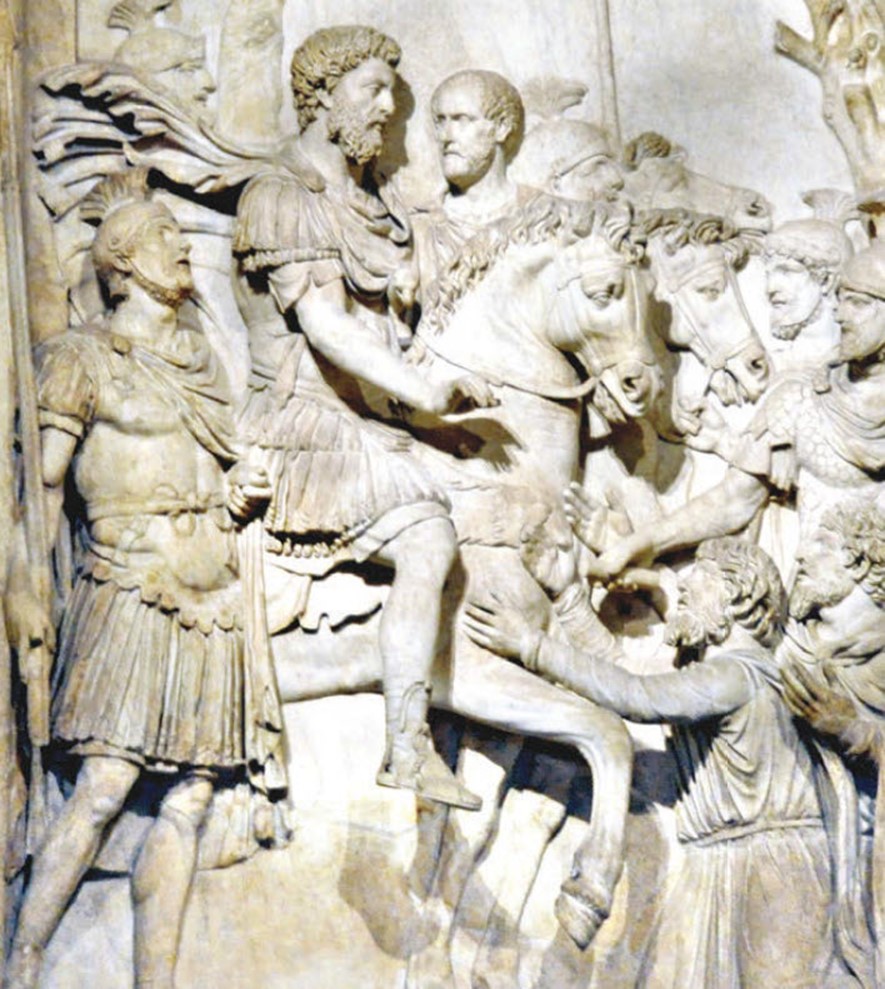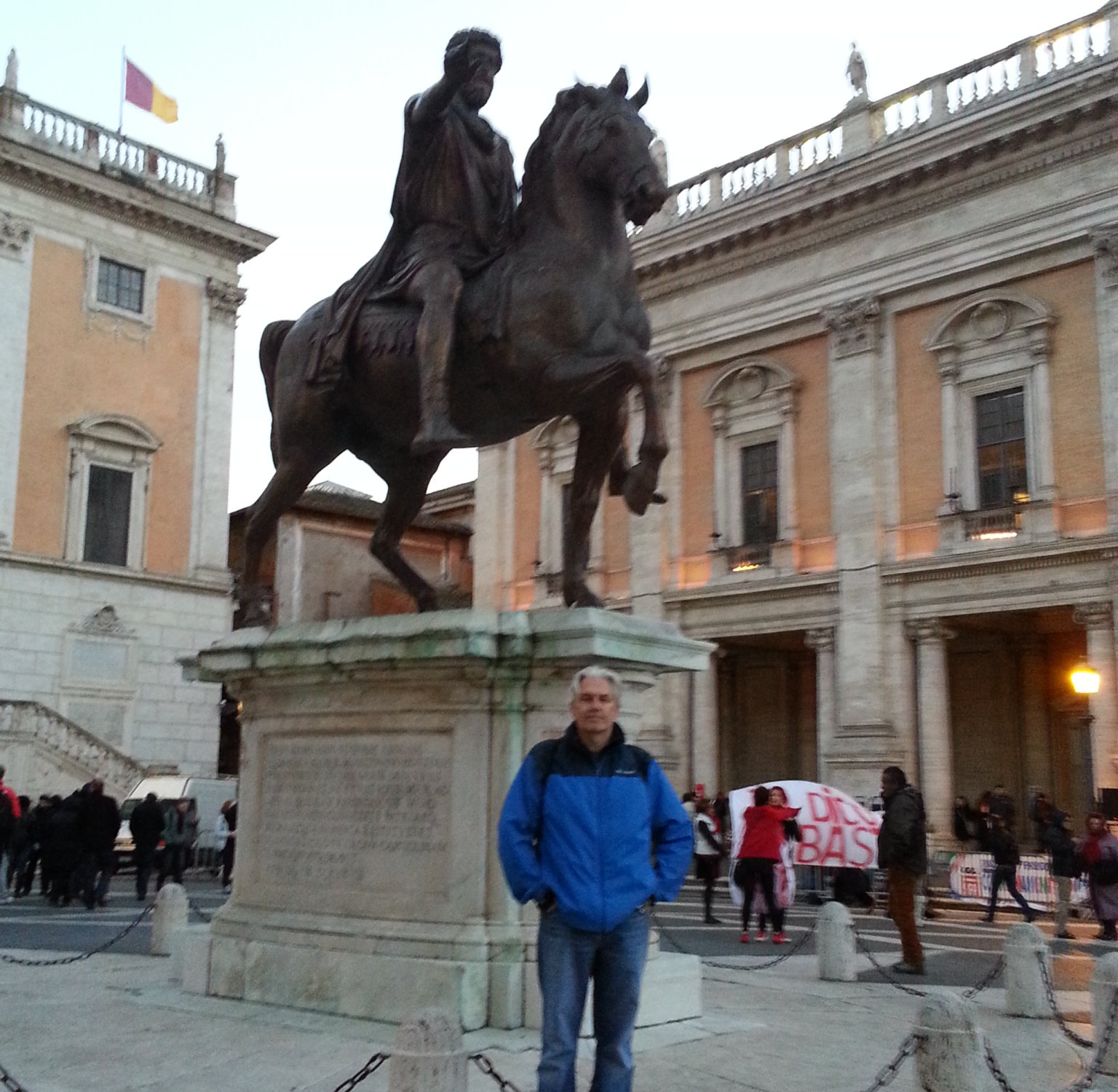The Wars of Marcus Aurelius is a game design from @Hollandspiele Games. A solo affair. I have previously written and vlogged about it. But I thought it might be fun to share a little summary of the historical efforts that went.
Some have likened these wars to the Punic Wars in their duration, intensity and desperate nature. Early October expect a 3 part write up of the game play that I recently had! Superb, tense and lots of decisions to be made.
The Roman Empire was for the 1st time ruled by 2 emperors both adoptive sons of Antonius Pius who had selected Marcus Aelius Aurelius Versus Caesar to lead. But Marcus insisted his adoptive brother be made co emperor. However, Lucius Verus would prove to be diametrically different to Marcus, from work ethic, to lifestyle and military prowess. Marcus was not a Warrior or soldier by upbringing, he was well versed in the administration of the Empire through his formal training and 23 years’ experience.

Credit: Vol VII Issue # 6 of Ancient Warfare
His reign marked the end of a long period of relative peace in the 2nd century AD The emperor faced financial problems caused by frontier wars in Parthia in the East in the West invading Germanic tribes along the borders made numerous attempts to cross the Rhine and the Danube.
In addition to this severe flooding effect of Rome and to make matters worse variation of smallpox or something similar which was very contagious was brought back from the Eastern provinces this had a dramatic effect upon the population and the ability to raise revenue via taxes, as well as killing many people [which is estimated to be as high as 15 to 20 million people] . This plague also of course affect the strength and capability of the legions in the Roman armies.
This became so bad in fact that the armies had to be supplemented with slaves’ bandits gladiators and barbarians.
Lucius died at the age of 38 leaving Marcus now to oversee the entire Empire, he had some success leading armies against the Parthians but spent much of his time carousing in either Rome or Alexandria.
While Marcus was in Rome burying his adopted brother, the Marcomanni destroyed a city and besieged another. Which was all rather rude. By the end of 171AD the Romans had forced rebel tribe to sign a treaty promising that they would leave a 7 km wide security zone along the river on settled.
In the meantime the Vandals and the Sarmatians had invaded Dacia while further to the East of the Sarmatians, Costoboci had crossed the Danube, ravaged Thrace and Macedonia and were only 20 km from Athens! They plundered and destroyed the temple of the Eleusinian mysteries.
In 173 AD further invasions by the Chatti and other tribes were repelled but then after beating the Iazyges, then the Quadi revolted again, the war moved West and in 174 the Quadi had to confront the Romans in their home lands which would be roughly modern Slovakia after their subjugation garrisons were installed throughout that territory and they were forced to surrender hostages and provide contingents for the Roman army. It was during all of these trials that Marcus wrote his famous Meditations. Which has survived largely intact. While anti Christian his writings were powerful at the time and since. Stocism continued to evolve after his death and a t one point rivalled the Bible for printings in Europe at the outset of the printing press. His writings exhorted the Politician, warrior and citizen to invest themselves in ethics and to accept fate. But back to the historical time line in these Pannonian fields.

In 175AD Roman troops crossed the Danube again to finally subjugate the final tribe of cavalry tribe centric Iazyges.
In 177AD the Quadi and the Marcomanni rebelled in 179 a decisive battle took place against the Quadi and they surrendered yet again!
The constant invasions by multiple tribes forced a change in the tactics of the Romans. They elected to have smaller detachments of forces that were able to move quickly to critical areas. It was also however difficult for these forces to interactively plan and communicate effectively.
In the late Roman Empire the answer to this dilemma was the creation of reservists that were stationed behind the front lines and who could be deployed when needed. This model consumed 16 of the 33 Roman legions which would be stationed along the Danube river and nearby regions.

